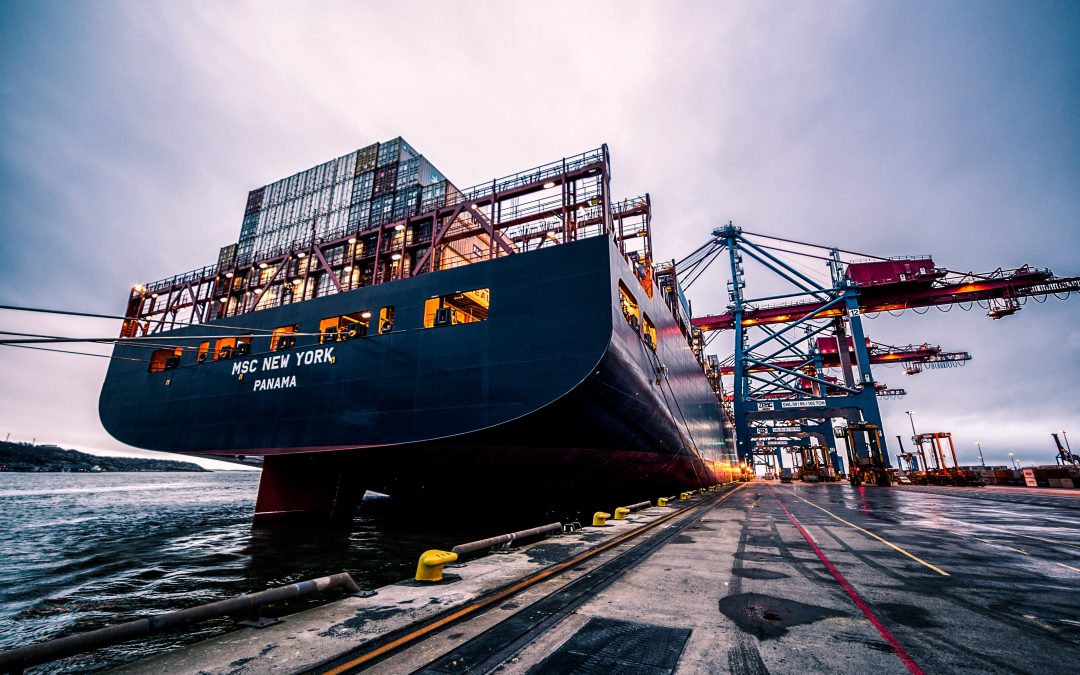Don’t miss the trade bus (ship)!
World trade volume has increased around 3.5 times since the inclusion of China in WTO ( World Trade Organization ) in 2001. Although the rate of growth had been roughly similar in the 20 years before the event, China has been the greatest beneficiary.
China now handles almost a fourth of world’s container trade. The massive container volumes coming from (and to lesser extent going to) Chinese ports are the result of very large trade volumes as China became the world’s suppliers of almost everything from industrial to consumer goods.
The substantial movement is helped by improved and world beating logistics infrastructure especially at the ports and their connectivity to the centres of productions.
The largest container port in China at Shanghai handled more than 43 Mn TEUS in 2020 from virtually nothing in early 2000s. The port overtook port of Singapore in 2010 as the world’s largest port. Chinese container ports are consistently among top 10 ports in the world in terms of volume handled. In 2020, Chinese ports took 8 out of 10 top spots.
Ships of 20,000 TEU capacity size can now be handled at a number of ports in China. The upshot has been continuous reduction in slot rates (except during COVID due to other factors). Also, better ports and connectivity meant faster turnaround of ships and containers. These all factors have helped in reduction in logistics costs further boosting the trade ( especially exports ) from China.
However, the winds are now changing against the Chinese trade juggernaut. The effect of geopolitical tensions, unpredictable Chinese policies n COVID, increased protectionism etc. are pointing towards slower growth in the world trade and changes in world’s supply chains.
Countries and companies are now looking for enhanced reliability and resilience rather that only pursuing for efficiencies and low costs. As a result, countries like Mexico, Vietnam & India are likely to benefit from the change. The change is already underway and being witnessed.
The confluence of various internal developments are also going to help India in becoming a sizeable player in international market. Although the share of container volumes from India are only at around 2% of world trade of around 800 mn teus in 2020, the share has consistently increased from the stagnant 1.6% -1.7% of world trade between 2010-2016 .
With the push on Production Linked Incentive (PLI) Scheme to a number of strategic industries the growth in container traffic is expected to reach new highs at least for a decade or so. The PLI scheme can be substantially credited for slew of recent announcements by players like Boeing, TSMC , Apple etc. Finally, Indian trade ship is helped by the. favourable direction of policy wind.
The tailwinds are likely to provide momentum to Indian trade. Indian exports are expected to grow at frenetic space in the coming decades.
But it is imperative to watch out for bottlenecks especially on logistics front. To provide a perspective , the largest container vessel that an Indian port has ever handled yet was APL Raffles. The vessel has a capacity of around 18000 TEU but it was laden only with ~ around 13000 TEUs . The vessel was handled at Adani Mundra Port in January 2022.
While this was an achievement, it is still far shy of handling vessels with more than 20,000 TEU which are quite common. And mind you, Adani Mundra Port is the only port that can handle vessels with capacity ~ 15,000 TEU .
To understand the implication , it is good to understand the broad economics of the trend towards large vessels. Bigger vessels enjoy better economies due to scale as compared to smaller vessels. Of course, that requires more consolidated trade such as between China & US or China & Europe to offset the high capital costs of very large vessels.
The trade between China and rest of the world has been benefited by consolidation of cargo. The resultant lower costs are passed onto customers due to excess capacity in the shipping market lowering shipping costs to trade. The trade, in turns , benefitted and positive flywheel came into motion.
In order to reap the benefits of trade and manufacturing policies, India traders will also need similar flywheel to play. Therefore, more ports in India should gird up to handle large vessels of around ~ 20000 TEU to leverage the benefits of scale and complement the movement of trade. Both state and central government need to understand the complementarity between trade and ports infrastructure. The support should not only be provided to the target industries but also to target ports which are the enablers of trade. These ports should be prioritized in order to their importance to trade and focused efforts with strict timelines should come into force that too immediately.
The good news is that the investment in ports is going to pay for very long term without additional expansion in at least for next 10-15 years. The main reason is that highest capacity of vessels have almost reached plateau not so much due to engineering issues but owing to logistical challenges and economics. Infrastructure at competing ports both on marine side and land side have to undergo step jumps which is not likely due to geopolitical and economic risks. Moreover, restrictions posed by waterways such as Suez Canal will act as a bottleneck in foreseeable future.
If the enabling infrastructure is not facilitated in time , India is likely to lose the opportunity of becoming a large export hub provided by the narrow window of opportunity at present. Don’t miss the bus ( or rather ship)!
For any queries on container or logistics market in India please mail at

